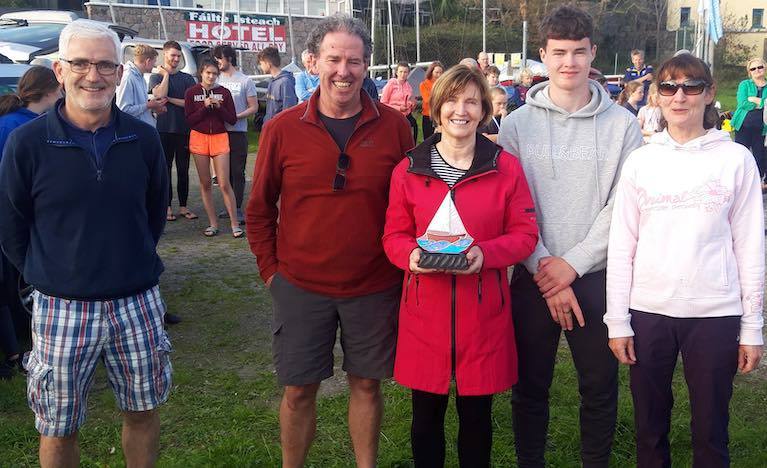Displaying items by tag: John Hannan
Sea Kayaking & Mountaineering Lawyer, Judge & Father Remembered by Spiddal Sailing Club with Annual John & Stephanie Hannan Award
A special tribute has been paid to the late sea kayaker, mountaineer and circuit court judge John Hannan with a new annual trophy for sailors in An Spidéal, Co Galway.
John Hannan, who died after an illness in Galway in late February at the age of 56, was an experienced kayaker and mountain trekker.
He took up canoeing while studying in what was then University College, Galway in the 1980s, and participated in the Irish Himalayan Canoeing Expedition in 1987.
With him were paddlers Declan Gavin, Mick Feeney, Deirdre Fagan, Joe O’Connor, Humphrey Murphy and Ursula MacPherson and film-maker Billy Keady.
They were the first Irish kayaking team to navigate some of the roughest white water in the world, taking a 100-kilometre route down the Trisuli and Marsyandi rivers.
Originally from Limerick, John Hannan pursued a career in law, becoming a barrister and circuit court judge. He continued to pursue his passion for adventure through kayaking and mountaineering.
He and his wife Stephanie, from Melbourne, Australia, and children Marcus and Sarah were active members of Cumann Seoltóireachta an Spidéil (CSS) based in Spiddal, Co Galway – with Stephanie being club sail training organiser for several years.
 Stephanie Hannan is presented with a Cumann Seoltóireachta an Spidéil flag by commodore Dave Cahill after the CSS 2020 regatta on September 19th, 2020 Photo: Bartley Fannin
Stephanie Hannan is presented with a Cumann Seoltóireachta an Spidéil flag by commodore Dave Cahill after the CSS 2020 regatta on September 19th, 2020 Photo: Bartley Fannin
The inaugural John and Stephanie Hannan Award was commissioned by the club as an annual prize. The piece of glassware in the shape of a sailing dinghy on bog oak was designed and made by Sue Donnellan’s glass craft design studio in An Ceardlann, An Spidéal.
It was presented at this weekend’s CSS regatta by Stephanie Hannan to Mark and Denise De Faoite, who were the fastest adult sailors in the 420 fleet.
Marcus Hannan was presented with third prize for his winning performance in sailing two of three races entered by Ekaterina Foyle in her Laser 4.7.
Winners of the 420 class at the regatta were Ciaran Reaney and Cathal Conneely, with Mac O’Brien and Eoin Cahill taking second place.
 Club commodore Dave Cahill presents the first prize to the winning 420 crew of (left to right) Ciaran Reaney and Cathal Conneely at the CSS 2020 regatta Photo: Bartley Fannin
Club commodore Dave Cahill presents the first prize to the winning 420 crew of (left to right) Ciaran Reaney and Cathal Conneely at the CSS 2020 regatta Photo: Bartley Fannin
Sadhbh Laila Riggott and Catherine Harvey took first in the mixed fleet, sailing a Laser Pico, with Alanna Ní Thuairisg and Kate Ní Chonghaíle taking second place in a Topaz Uno.
A brisk north-easterly had made for challenging conditions for the Oppie fleet, forcing the abandonment of their race after they had valiantly put to sea.
Speaking at the prize-giving, CSS commodore Dave Cahill recalled how John regularly supported young sailors on safety RIB duty and shore recovery. He also paid tribute to Stephanie for her junior organiser role and presented her with a specially commissioned CSS flag.
Billy Keady’s documentary of the Irish Himalayan Canoeing Expedition was screened last year at a CSS event in Indreabhán attended by the Hannan family.





























































